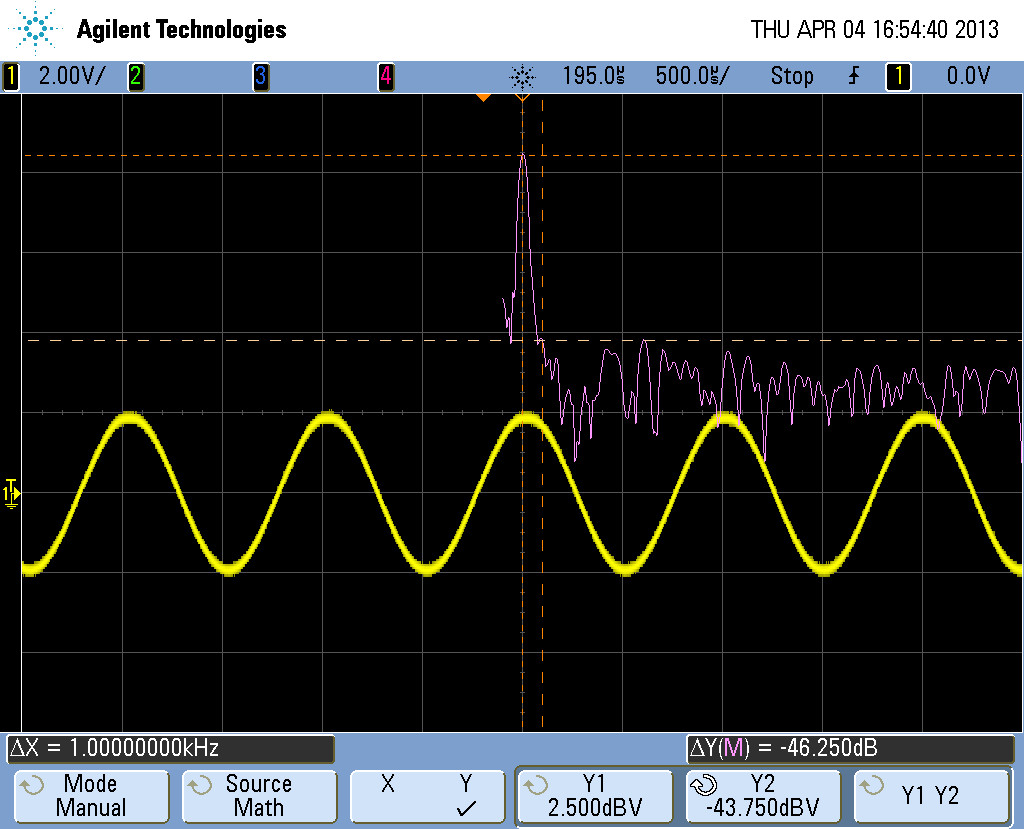3.1 Sine Wave Generation Using NCO Module
As discussed in Case Study: Intruder Detection System Using Discrete Fourier Transform (DFT) by Correlation, a sine wave of desired frequency can be generated using the NCO module. Code Snippet for Sine Wave Generation Using NCO Module shows a code snippet for generating a square wave at 1 kHz. The square wave generated by this method is passed through a fourth order Sallen Key filter.
Code Snippet for Sine Wave Generation Using NCO Module
// NCO output should be routed to a GPIO pin using PPS module and the I/O
// registers and clock configuration bits must be correctly configured
// prior to this segment of code.
// Configure NCO1 to produce 1kHz square signal using 16 MHz clock source
#define F_OSC 16000000UL // External oscillator frequency (Hz))
#define F_NCO 1000UL // Output frequency of NCO (Hz)
#define NCO_ACCU_MAX 1048576UL // 2^20
NCO1CLK = 0x06; // PWS = 0 (ignored for Fixed duty cycle operation)
// NCO clock source is EXT OSC
NCO1INC = (2*F_NCO*NCO_ACCU_MAX)/F_OSC;
NCO1CON = 0x80; // Fixed duty cycle (50%), Polarity = non-inverted
// NCO module enabledFigure 1 shows a block diagram of the system.
The simulation of the Sallen Key filter and the resulting waveforms are illustrated in Figure 2.

The output sine wave along with its resulting frequency spectrum is captured using an oscilloscope, see Figure 3. The fundamental frequency at 1 kHz is the most dominant while the other harmonic frequencies at 2 kHz, 3 kHz, 4 kHz, and so on are negligible or are very small.

